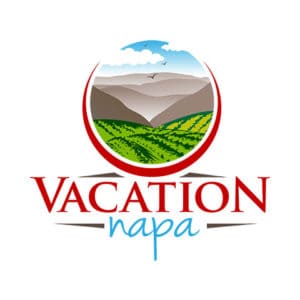
Napa Valley has a long, proud tradition of winemaking—but its global “wow” moment came more recently, when a single blind tasting helped propel Napa onto the world stage. If you’ve ever wondered what type of wine Napa is known for, which grapes dominate the valley, and where to taste your favorites, you’re in exactly the right place.
The quick answer: Napa is famous for Cabernet Sauvignon and Chardonnay
Cabernet Sauvignon and Chardonnay are Napa’s signature wines, and their fame is closely tied to the historic 1976 Judgment of Paris—a blind tasting where a Napa Cabernet and a Napa Chardonnay famously outscored top French wines.
And it’s not just reputation: by vineyard acreage, Cabernet Sauvignon is Napa’s most planted grape (about 54%), followed by Chardonnay (about 13%), then Merlot, Sauvignon Blanc, and Pinot Noir.
But here’s the fun part: Napa isn’t a “one-style” wine region. The valley is a patchwork of microclimates, elevations, and soils—meaning the Cabernet you love in one area can taste surprisingly different just a few miles away.
Napa’s secret sauce: AVAs (and why they matter when you’re tasting)
Napa Valley’s diversity is organized into official sub-regions called American Viticultural Areas (AVAs). Napa Valley itself became an AVA in 1981, and today it contains 17 nested AVAs—including the newest, Crystal Springs of Napa Valley, officially recognized in 2024.
Quick note: You may still see some tourism sources cite 16 AVAs, but the official count is now 17 due to the addition of Crystal Springs.
Why should you care? Because knowing the AVA helps you “shop” Napa by style:
- Want bold, structured Cabernet? Head toward warmer valley-floor and mountain AVAs.
- Want zippy Chardonnay or elegant Pinot Noir? Aim for cooler southern areas and fog-influenced sites.
The wines Napa is known for (and where to taste them)
Cabernet Sauvignon: Napa’s headline act
If Napa had a theme song, Cabernet Sauvignon would be it. Expect blackberry, black currant, plum, plus those classic Napa notes of cocoa, cedar, tobacco, and baking spice—depending on where the grapes are grown and how the wine is made. Cabernet is also the backbone of many Bordeaux-style blends.
Where Cabernet lovers often start (AVA ideas):
- Oakville & Rutherford (often plush, “benchland” power and polish)
- Stags Leap District (often more fragrant, silky structure)
- Howell Mountain, Diamond Mountain, Spring Mountain, Mt. Veeder, Atlas Peak (often mountain intensity: firmer tannin, darker fruit, lots of personality)
Cabernet is also widely made in places like St. Helena and Calistoga, where warmth can bring extra ripeness and richness.
If you love Cabernet history: The Napa red that won the “Judgment of Paris” was Stag’s Leap Wine Cellars’ 1973 S.L.V. Cabernet Sauvignon—and yes, the winery is still welcoming visitors by reservation. Stag’s Leap Wine Cellars+2Stag’s Leap Wine Cellars+2
Chardonnay: Napa’s underrated superstar
Chardonnay has had its ups and downs in pop culture, but Napa’s best bottlings are in the serious-league category—ranging from crisp and citrusy to creamy, barrel-aged styles with vanilla, toasted hazelnut, and ripe orchard fruit.
Where Chardonnay shines (AVA ideas):
- Los Carneros (cooler, often bright + elegant)
- Coombsville (cooler mornings/evenings, often fresh structure)
- Oak Knoll District (moderated climate—very versatile)
- Atlas Peak & Mt. Veeder (mountain-grown expressions can be vivid and mineral)
And for pure wine-nerd joy: the Napa white that took top honors at the 1976 tasting was Chateau Montelena’s 1973 Chardonnay—and Chateau Montelena continues to host visitor experiences (including current listings and seasonal event partnerships).
Merlot: Napa’s “second red” (and a great value play)
Merlot in Napa can be gorgeous: plum, blackberry, black cherry, and a softer, rounder feel than many Cabernets—while still tasting serious and age-worthy when made well.
Great AVA zones to explore for Merlot-style richness:
- Cooler-to-moderate areas like Carneros, Coombsville, Oak Knoll
- Valley-floor favorites like Yountville
- Mountain AVAs for firmer structure and deeper color
Merlot is a major Napa variety by acreage, and it’s often a smart pick if you want Napa flavor without always paying “Cabernet prices.”
Pinot Noir: delicate, complex… and picky about where it grows
Pinot Noir needs cooler conditions and a gentle touch. In Napa, that typically means areas with more marine influence and fog. When it hits, expect strawberry, cherry, rose petal, plus earthy or savory notes—silky texture, medium body, and loads of charm.
Where to look:
- Los Carneros (the classic Napa Pinot zone)
- Cooler pockets like Coombsville and Wild Horse Valley also appear in many Pinot conversations
Sauvignon Blanc (including “Fumé Blanc”): Napa’s refreshing white side
Napa Sauvignon Blanc can swing from tropical and zesty to melon, citrus, and herbs, depending on site and winemaking. A fun Napa-specific cue: “Fumé Blanc” is often used for a style that can include barrel aging and a more layered, smoky profile.
Where to start:
- Oak Knoll District is a frequent go-to for whites, thanks to its moderated temperatures
- You’ll also find compelling versions from cooler sites throughout the valley
Sauvignon Blanc is among Napa’s top planted varieties—so don’t treat it like a rarity.
Zinfandel: Napa’s bold, beautiful surprise
If your only Zinfandel memory is sweet “white zin,” Napa has good news for you. Napa Zinfandel is often rich, spicy, and deeply fruity—think blackberry jam (in the best way), black pepper, and a warm finish.
Where Zin fans often roam:
- Calistoga and St. Helena (warmth helps Zinfandel get plush and expressive)
- Spring Mountain and Howell Mountain for structure + spice
“Local surprises” worth ordering when you see them
One of Napa’s greatest strengths is that it’s both traditional and experimental. Even though Cabernet and Chardonnay lead the headlines, Napa grows 60+ grape varieties, and the valley’s top lists also include Cabernet Franc (often floral and savory) alongside the big names.
So when you’re tasting, keep your eyes open for:
- Cabernet Franc (especially if you like graphite, violets, and herbs)
- Petite Sirah (inky, powerful, age-worthy)
- Syrah (peppery, smoky, dark-fruited)
- Malbec (juicy, plush, often blended)
- Sparkling wine (especially in cooler southern zones)
If a tasting room pours something unfamiliar, try it. The wine you didn’t plan for is often the one you’ll talk about all year.
Related questions
What is the best time to visit Napa Valley for wine tasting?
If you want the full vineyard energy—workers in the rows, grapes rolling in, that “crush season” buzz—aim for harvest season (generally August through October), and it can stretch into late October or even early November for some red varieties depending on the year.
Prefer fewer crowds (and often better lodging deals)? Consider late fall through spring—you’ll still find wineries open for tastings, and you’ll spend less time in traffic and more time sipping.
Why is Napa Valley famous for wine?
Two reasons: quality and a global spotlight moment. Napa’s combination of climate, soils, and micro-regions gives winemakers a huge toolbox—then the 1976 Judgment of Paris broadcast Napa’s excellence to the world when California wines beat elite French bottles in a blind tasting organized by Steven Spurrier (with Patricia Gallagher).
Business and event verification (items mentioned in this post)
This article mentions two historic wineries connected to the 1976 tasting, and both are currently operating with visitor offerings:
- Stag’s Leap Wine Cellars lists current tasting experiences and reservations. Stag’s Leap Wine Cellars
- Chateau Montelena lists current “Visit” options (including a tasting room listing and winery-related visitor info). Chateau Montelena
At Vacation-Napa.com, we are passionate about promoting authentic experiences in Napa Valley. Our expert team of wine enthusiasts has curated a comprehensive guide to help you explore the renowned wines that have established Napa as a premier winemaking destination.
